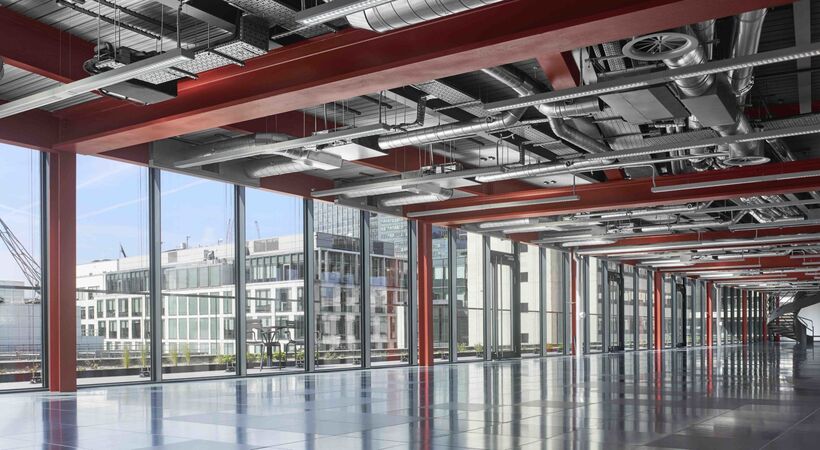Rich Hyams, director at astudio looks at how offices and the built environment will change post Covid-19
The easing of lockdown measures won’t mean a return to business as usual, or at least not business as we knew it. The workplace, in particular, will face scrutiny, and changes will be necessary to meet post-pandemic safety standards. By looking at recent designs, we can start to get a sense of what the future workplace may offer.
Yesterday’s open plan office
In the decade following the 2008 financial crisis, office space shrank by 8.3% according to Cushman & Wakefield, and the rise of WeWork’s collaboration-friendly co-working spaces eroded that further. Despite serving the purpose of maximising productivity and minimising cost, in these changing times these densely packed workspaces are no longer suitable.
Draft guidelines, seen by the BBC, suggest physical screens and protective equipment as a means of reducing workplace contact. However, astudio’s recent 70 Wilson project shows how technology could provide more advanced safety measures.
Footfall monitoring systems - initially installed to track the flow of occupants in the building - can be repurposed to monitor occupational density of each individual floor, for example. Display panels installed throughout the building can issue a warning when a density threshold is met, encouraging occupants to maintain safe social distancing.
Eliminating high-contact surfaces
Social distancing measures, however, won’t address the various high-contact points dotted around the workplace. Printer screens, lift buttons, fridge doors — it’s almost impossible to count the number of times a worker touches surfaces that others have already come into contact with. As we return to the office, employees are likely to be conscious of the threat that even the smallest element of their environment poses. As such, we expect demand for contactless solutions integrated into commercial spaces to grow.
Building developers and managers should consider the benefits of new advancements, such as voice or motion activated technology. Implementing solutions such as voice-controlled elevators, remotely operated printers, and increased use of sensors throughout offices would substantially reduce workplace risk. Emerging technologies, such as facial recognition, offer further promise that would help to create truly touch-free working environments.
Replacing outdated ventilation systems
While two metres is thought to provide enough distance to limit the spread of COVID-19, ventilation systems can allow contaminated droplets to spread far further according to the Chartered Institution of Building Services Engineers (CIBSE).
Advanced ventilation systems significantly reduce this threat by maximising the distance between air entering and exiting a room. In a recent project for Twickenham Academy, we installed an air displacement system that allows fresh air to enter from the floor and exit at the top of the room, ensuring that inadequate air isn’t being recirculated.
Widespread use of such systems would provide a higher standard of air quality, protecting occupants from the immediate threat of COVID-19, as well as the symptoms of long-term exposure to polluted air.
Retrofitting: Viable office redesign
These technologies would allow offices to spring back to life, providing safe working environments without significantly impacting efficiency.
There are challenges, however — much of our commercial real estate resides in outdated structures that cannot cope with modern demands. For most, the expensive demolition/new build cycle will be infeasible, but retrofitting offers a viable solution. This process involves stripping back outdated structures, allowing for the installation of systems and components that meet new demands.
By retrofitting existing structures, we can create safe and efficient environments that allow businesses to get back on their feet safely, and soon.





